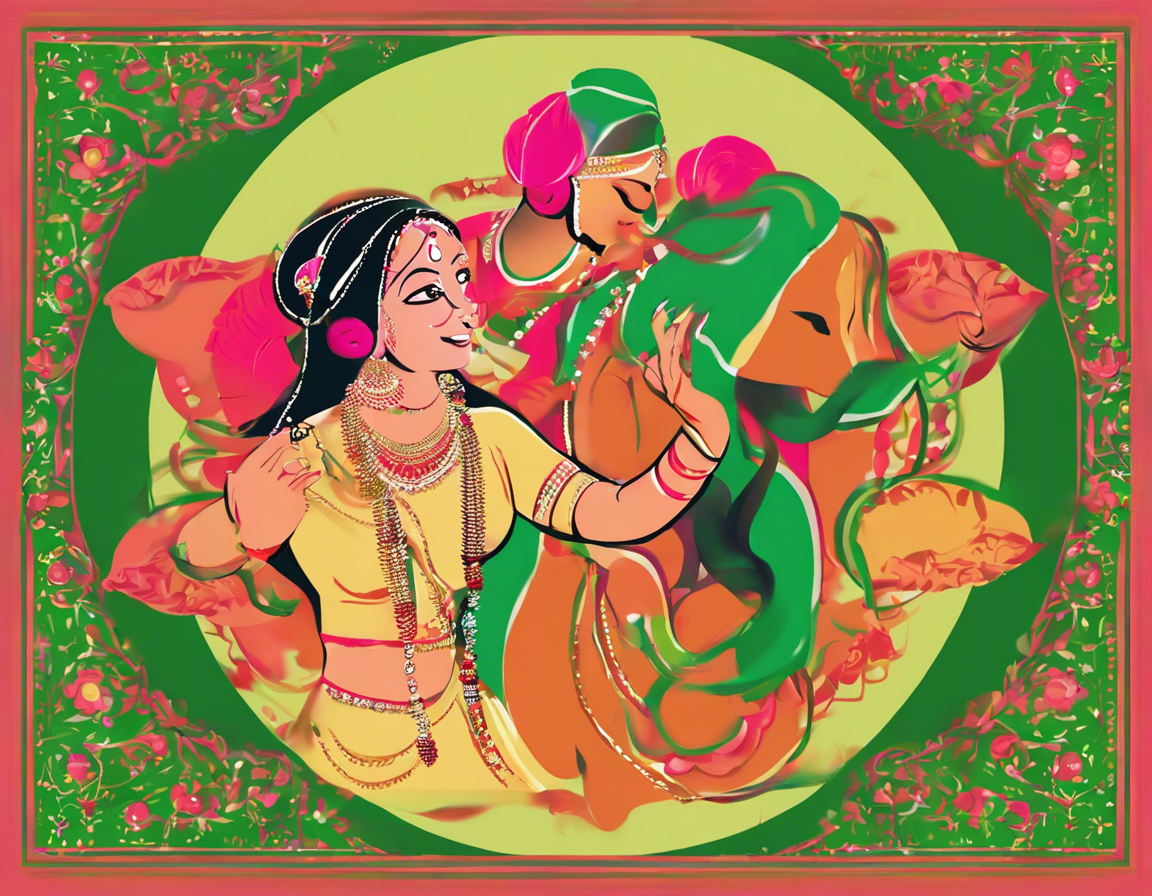Hariyali Teej 2023: A Festive Celebration of Love and Togetherness
Hariyali Teej is a significant festival celebrated mainly by Hindu women. It falls on the third day of the bright half of the North Indian lunar month of Shravana. This auspicious day is dedicated to the worship of Goddess Parvati and is celebrated with great enthusiasm in states like Rajasthan, Uttar Pradesh, Bihar, and Madhya Pradesh. The festival holds immense cultural and social importance, emphasizing the values of love, marital bliss, and the onset of the monsoon season.
History and Significance
The festival of Hariyali Teej has its roots in Hindu mythology, specifically the legend of Goddess Parvati and Lord Shiva. According to the mythological tales, Parvati observed intense penance and fasting to win Lord Shiva as her husband. After a series of rigorous rituals, Shiva finally accepted Parvati as his consort on the auspicious day of Teej. This day represents the union of the divine couple and symbolizes the eternal bond of love and dedication between husband and wife.
Traditional Rituals and Customs
-
Fasting: Women observe a day-long fast on Hariyali Teej to seek the blessings of Goddess Parvati for the well-being and longevity of their husbands.
-
Mehendi: Applying intricate henna patterns on hands and feet is a common practice among women during Teej. It symbolizes beauty, love, and marital happiness.
-
Swings: Women, especially newlyweds and young girls, enjoy swinging on decorated jhulas or swings adorned with flowers and colorful decorations. This tradition signifies joy and merriment.
-
Puja: Special prayers and offerings are made to Goddess Parvati at home or in temples. Married women seek blessings for a happy married life, while unmarried girls pray for a suitable life partner.
-
Dance and Music: Folk songs, dances, and cultural performances are integral parts of Hariyali Teej celebrations. Women gather to sing traditional Teej songs and participate in vibrant dance routines.
Celebrations Across India
While Hariyali Teej is prominently celebrated in North India, its festivities extend to various regions across the country, each with its unique customs and traditions:
-
Rajasthan: In Rajasthan, Hariyali Teej is celebrated with grandeur and opulence. Women dress in vibrant green attire, adorned with traditional jewelry, and participate in processions and cultural events.
-
Uttar Pradesh: The cities of Mathura and Vrindavan witness elaborate Teej celebrations, with temples decorated magnificently and devotees thronging to offer prayers to Lord Krishna and Radha.
-
Madhya Pradesh: In regions like Bhopal and Indore, women come together to perform intricate fairs and rituals, showcasing the rich cultural heritage of the state.
-
Bihar: Teej fairs are organized in different parts of Bihar, where women indulge in shopping, feasting, and cultural activities. The markets are filled with colorful bangles, traditional attire, and festive delicacies.
Tips for Celebrating Hariyali Teej
-
Dress Appropriately: Adorn yourself in traditional green attire, preferably depicting the essence of the monsoon season.
-
Prepare Traditional Delicacies: Cook traditional sweets like ghewar, malpua, and kheer to savor the festive flavors of Teej.
-
Mehendi Design: Experiment with intricate henna designs and patterns to enhance the beauty of your hands and feet.
-
Stay Hydrated: Since Teej falls during the monsoon season, ensure you stay hydrated and consume light, nutritious meals during and after the fast.
FAQs (Frequently Asked Questions)
- What is the significance of wearing green on Hariyali Teej?
-
Green symbolizes growth, new beginnings, and prosperity. It represents the lush vegetation that marks the onset of the monsoon season.
-
Can unmarried girls observe fast on Hariyali Teej?
-
Yes, unmarried girls often observe the Teej fast to seek blessings for a suitable life partner and marital bliss in the future.
-
Why do women swing on jhulas during Teej?
-
Swinging on decorated jhulas symbolizes the joy and excitement of monsoon, fostering feelings of happiness and togetherness among family members.
-
Is it mandatory to fast on Hariyali Teej?
-
Fasting on Teej is a traditional practice followed by many women to honor the festival’s significance. However, it is not mandatory and varies based on personal beliefs.
-
How long is the fasting duration on Hariyali Teej?
-
Women observe a day-long fast from sunrise to moonrise, abstaining from food and water until the ceremonial sighting of the moon.
-
What are the traditional sweets prepared for Hariyali Teej?
-
Traditional sweets like ghewar (a Rajasthani delicacy), malpua, kheer, and sweets made from coconut and jaggery are popular choices during Teej celebrations.
-
Are there any specific prayers or mantras recited on Hariyali Teej?
-
Women recite prayers and chants dedicated to Goddess Parvati and seek her blessings for marital harmony, prosperity, and well-being of their families.
-
How do different regions in India celebrate Hariyali Teej differently?
-
While the core rituals remain similar, different regions showcase their cultural diversity through unique customs, traditional attire, and culinary delights specific to their heritage.
-
Can men also participate in the festivities of Hariyali Teej?
-
While Teej is primarily celebrated by women, men actively participate by offering prayers, engaging in cultural events, and taking part in family celebrations to honor the festival’s spirit of togetherness.
-
What is the story behind the origin of Hariyali Teej?
- The festival is rooted in the mythological tale of Goddess Parvati’s unwavering devotion and penance to win Lord Shiva as her husband, symbolizing love, dedication, and the triumph of virtue.
Hariyali Teej is not just a festival but a cultural extravaganza that celebrates love, togetherness, and the essence of monsoon. It brings communities together, strengthens familial bonds, and rejuvenates the spirit of joy and festivity. With its rich traditions, vibrant customs, and age-old rituals, Hariyali Teej continues to captivate hearts and souls, embodying the essence of eternal love and devotion.





